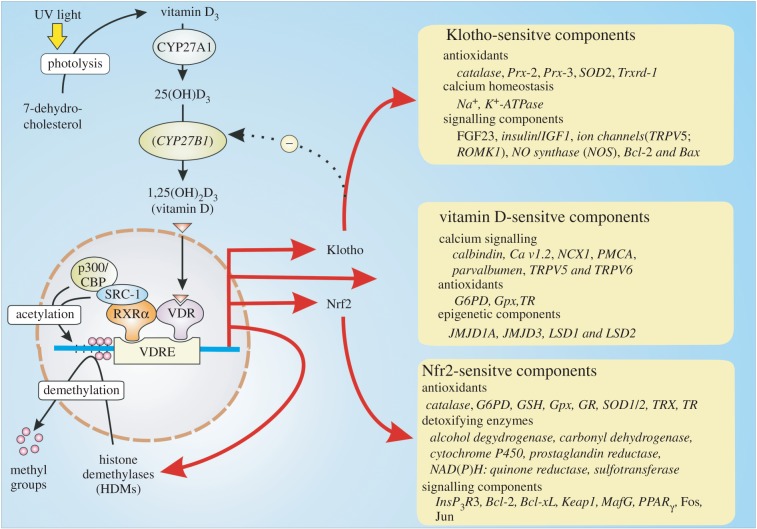Figure 2.
The vitamin D hormone 1,25-dihydroxyvitamin D3 [1α,25(OH)2D3] binds to the vitamin D receptor (VDR) that interacts with the retinoid X receptor (RXR) to form the VDR/RXR heterodimer that binds to the vitamin D response element (VDRE). Once in place, the VDR initiates the expression of a large number of genes located in many different cell types to express proteins that function in a number of cellular processes. Many of its actions also depend on its ability to increase the expression of both Klotho and Nrf2 that carry out many of its homeostatic functions.

